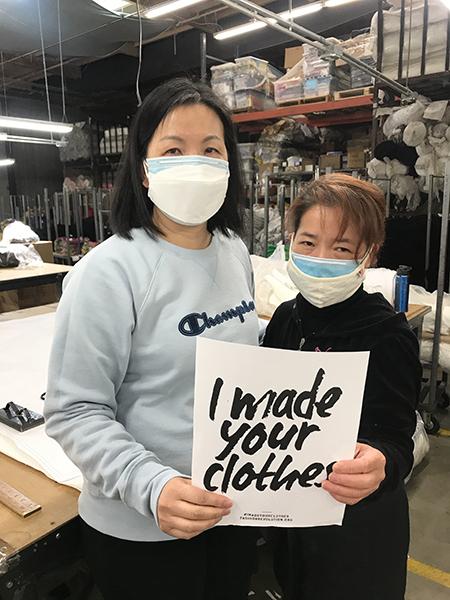Fact: the fast fashion industry has a detrimental environmental impact on our planet.
Also fact: the world is facing a water crisis.
While these two statements are widely accepted as separate truths, what is often overlooked is the critical intersection between them. One of the fashion industry’s most toxic and damaging practices is its immense consumption and pollution of our earth’s water. In total, fashion consumes up to 79 trillion liters of water per year (think, 31.6 million Olympic-sized swimming pools of water - per year!) and produces almost 20% of global water waste. Except for agriculture, fashion uses more water than any other industry on the planet.
Just let that sink in for a moment.
But this is not just an ecological crisis, but a humanitarian crisis also. 785 million people worldwide lack even a basic drinking water service. So it seems unfathomable just how invisible fashion’s role in the global water crisis is. In another case of systemic greenwashing, you’ll find that a lot of the water consumed by the fashion industry is often not even factored into official calculations. The result? A skewed and falsified narrative.
The good news is that the tide is changing. In this article we’re deep diving into one of the reasons why the fashion industry is using so much water (ahem, cotton) and what we can do about it.
Culprit Number 1: Cotton
Cotton represents almost half the fiber used to make clothes and other textiles all over the world. But its cultivation is extremely water intensive because of just how much water it needs to grow. Just one cotton t-shirt uses 2,700 liters of water, and to reap just one kilogram of cotton takes from 7,000 - 29,000 liters of water. Fast fashion’s incessant consumerism is driving insane levels of demand which necessitates excessive production of cotton. Not to mention endorsing inhumane exploitation of minority groups such as the Uyghur Muslims in China.
The ecological impact is equally shocking. Cotton has already been responsible for the destruction of large scale eco-systems such as the Aral Sea in Central Asia. The irrigation needed for cotton crops puts stress on local water supply and depletes naturally occurring water supplies that can take years to replenish completely. The first people to feel the ripple effect are the local communities. And because of just how much demand there is for cotton, some nations find themselves choosing between cotton production and drinking water.
It’s beyond saying that this is unsustainable. But at the same time, can we stop using cotton?
Luckily, (some of) the fashion industry has caught on
While we’re far from putting an end to fashion’s excessive water use, the great news is there is so much that the industry as a whole, and we as consumers, can do.
OPT FOR ORGANIC COTTON
Thankfully, nobody’s saying abandon cotton completely. Sustainably farmed organic cotton is the answer to most of our prayers. Organic cotton uses 91% less water than regular cotton.
Organic cotton tends to be produced by small and independent farms using rainwater as opposed to artificial irrigation. This is far less water-intensive but also means that brands using organic cotton are supporting local suppliers instead of huge corporations.
Of course, nothing is completely water-tight. Whilst it’s preferable to opt for brands using organic cotton, it’s essential to follow up and verify their farming methods, their suppliers, and their modern slavery policies too. Just because their textiles are sustainable doesn’t instantly mean other aspects of their business are too.
Luckily with Consciously, we’ve done the work for you. We curate and vet brands so that you don’t have to, so you know that you’re doing good while looking good. Check out The Standard Stitch on Consciously to browse and shop must-have wardrobe essentials all made purely from recycled and organic cotton.
BUY LESS AND SECOND HAND
It goes without saying that the slow fashion movement is all about reducing consumption. It’s about developing and appreciating a value for minimalism, and a slower pace of enjoying fashion. Buying fewer clothes, less frequently from conscious brands is key to reducing our overall footprint. And when and if we buy, choosing eco-friendly brands or going secondhand is even better.
WASH YOUR CLOTHES LESS FREQUENTLY
Though the fashion industry has got some drastic changes to make to its production processes, consumers can also make small, incremental changes that make a huge difference.
When we purchase clothes and they become our possessions, the way we interact with and look after our garments has a huge environmental impact too. Washing our clothes less, changing up our washing machines, and using lower temperature settings are all ways to reduce our own individual water consumption. And just like that, we also reduce fashion’s overall footprint.




Leave a comment
All comments are moderated before being published.
This site is protected by hCaptcha and the hCaptcha Privacy Policy and Terms of Service apply.